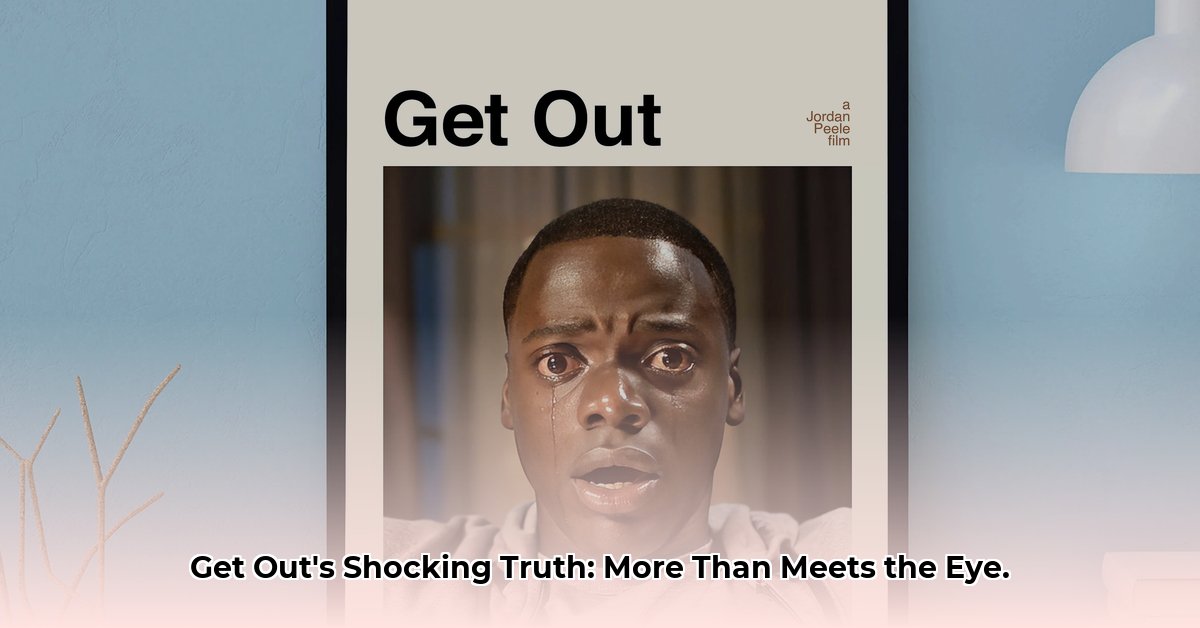Jordan Peele’s Get Out transcends the typical horror film, delivering a chillingly relevant social commentary on race relations in contemporary America. More than just jump scares and creepy basements, the film uses the genre as a lens to expose the insidious nature of microaggressions, the fetishization of Black bodies, and the unsettling reality of performative allyship.
Delving into the Depths of Get Out‘s Social Critique
Get Out’s brilliance lies in its ability to unveil the subtle, often overlooked ways racism permeates seemingly liberal spaces. The film doesn’t rely on overt displays of bigotry; instead, it masterfully employs nuanced storytelling and symbolism to dissect the complexities of race and identity in a society grappling with its own deeply ingrained prejudices.
The Sunken Place: A Metaphor for Marginalization
The Sunken Place, a visually arresting and deeply unsettling image of hypnotic paralysis, functions as a potent metaphor for the marginalization and silencing of Black voices. It’s the experience of being trapped within a system that devalues your existence, rendering you voiceless and powerless. This symbolic void resonates with the historical and ongoing struggle for racial equality, representing the feeling of being unheard and unseen within a society that often prioritizes white perspectives. Some scholars argue that the Sunken Place could also represent the psychological impact of internalized racism, suggesting a multi-layered interpretation of this potent symbol.
The Armitage Family: The Face of Liberal Racism
The Armitages, with their outwardly progressive demeanor, embody the insidious nature of liberal racism. Their seemingly benign curiosity about Chris’s physical attributes and cultural background quickly morphs into a disturbing fetishization and objectification. Their “admiration” for Black culture feels hollow, a thin veil concealing their true motives. Get Out challenges the notion of performative allyship, suggesting that true acceptance requires more than just surface-level pronouncements; it demands genuine empathy, understanding, and a commitment to dismantling systemic inequalities.
The Coagula Procedure: Appropriation and Erasure
The Coagula procedure, the horrifying brain transplant at the heart of the film’s plot, goes beyond mere body horror. It serves as a chilling allegory for the appropriation and erasure of Black identity. The Armitages and their associates desire the perceived advantages of Black bodies, seeking to possess their physical and cultural attributes while discarding their minds and lived experiences. This act of appropriation reflects a historical pattern of exploiting Black culture for profit while simultaneously marginalizing Black creators and voices.
The Auction: A Haunting Reminder
The auction scene, where Chris is presented as a commodity to be bid upon, is a visceral and unsettling echo of the dehumanizing history of slavery. It serves as a stark reminder of the commodification of Black bodies and the ways in which the legacy of this exploitation continues to manifest in contemporary society. This scene, though deeply disturbing, forces viewers to confront an uncomfortable truth about the ongoing struggle for racial justice.
Deconstructing the Symbolism of Get Out
Peele’s masterful use of symbolism adds layers of meaning to the narrative, enriching the viewing experience and prompting deeper reflection.
Key Symbols and Their Potential Interpretations:
| Symbol | Possible Meanings |
|---|---|
| The Teacup | Hypnotic control, manipulation, the façade of civility, the stifling of Black voices |
| The Coagula | Forced assimilation, erasure of Black identity, the theft of Black bodies |
| The Deer | Chris’s vulnerability, foreshadowing danger, a connection to his past trauma |
| Cotton | Historical connection to slavery and exploitation, the persistence of racial trauma |
| Bingo | Casual dehumanization, the objectification of Black bodies |
| The Flash | The sudden, jarring exposure of truth, the capturing and control of Black images |
These symbols, and others throughout the film, invite multiple interpretations, fostering discussion and encouraging viewers to engage with the film’s complex themes on a deeper level.
Get Out: A Catalyst for Conversation
Get Out is more than just a horror film; it’s a cultural phenomenon that sparked a national conversation about race, privilege, and the subtle ways prejudice permeates our society. Its impact extends beyond the screen, challenging viewers to confront their own biases and engage in meaningful dialogue about racial injustice. While it doesn’t offer easy answers, it raises crucial questions, prompting reflection and encouraging a deeper understanding of the complex realities of race in America. The film’s continued relevance suggests that its message is far from exhausted, offering ongoing opportunities for critical analysis and social commentary.
- How to Stop Apps From Running in the Background to Boost Your - December 1, 2025
- How To Move Apps On Your Droid For Better Organization - November 30, 2025
- How to Move Apps on Android for Better Organization - November 29, 2025










